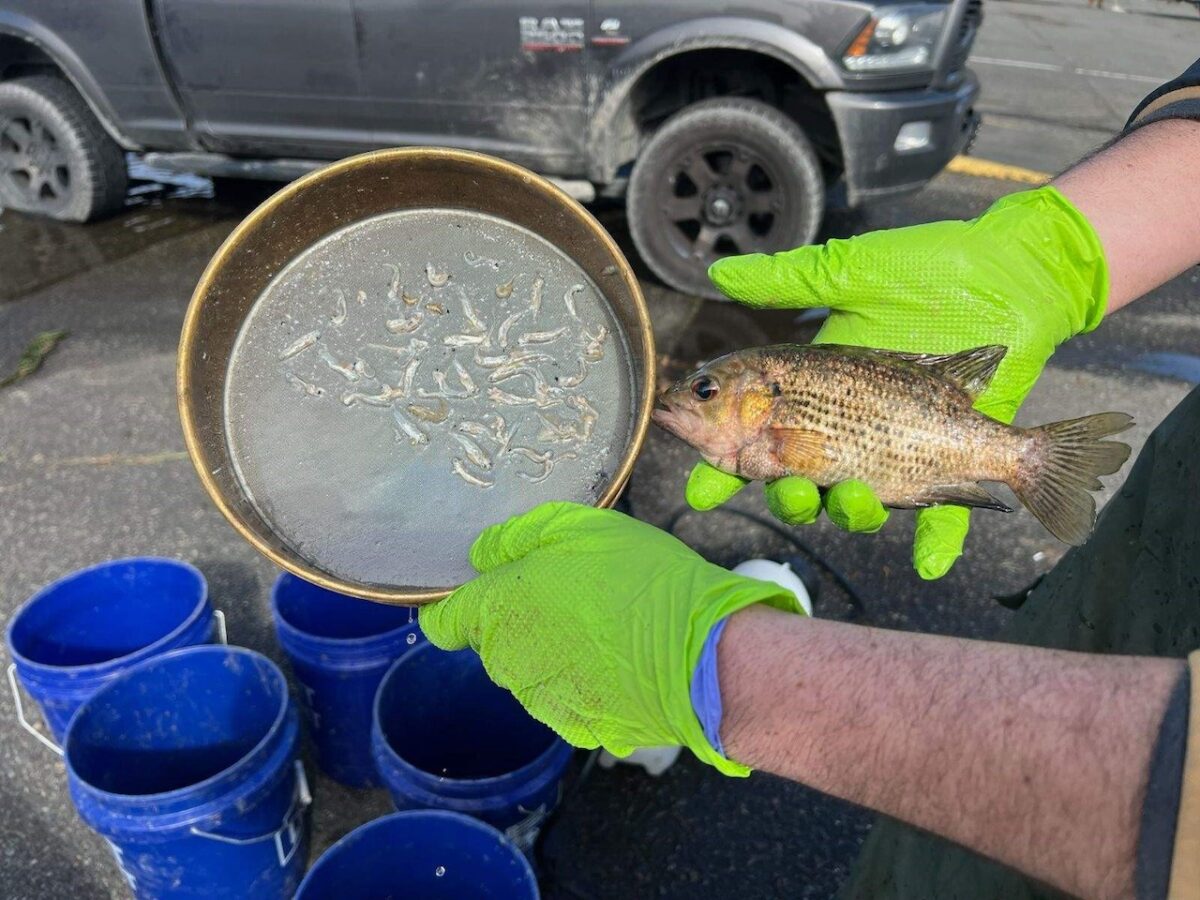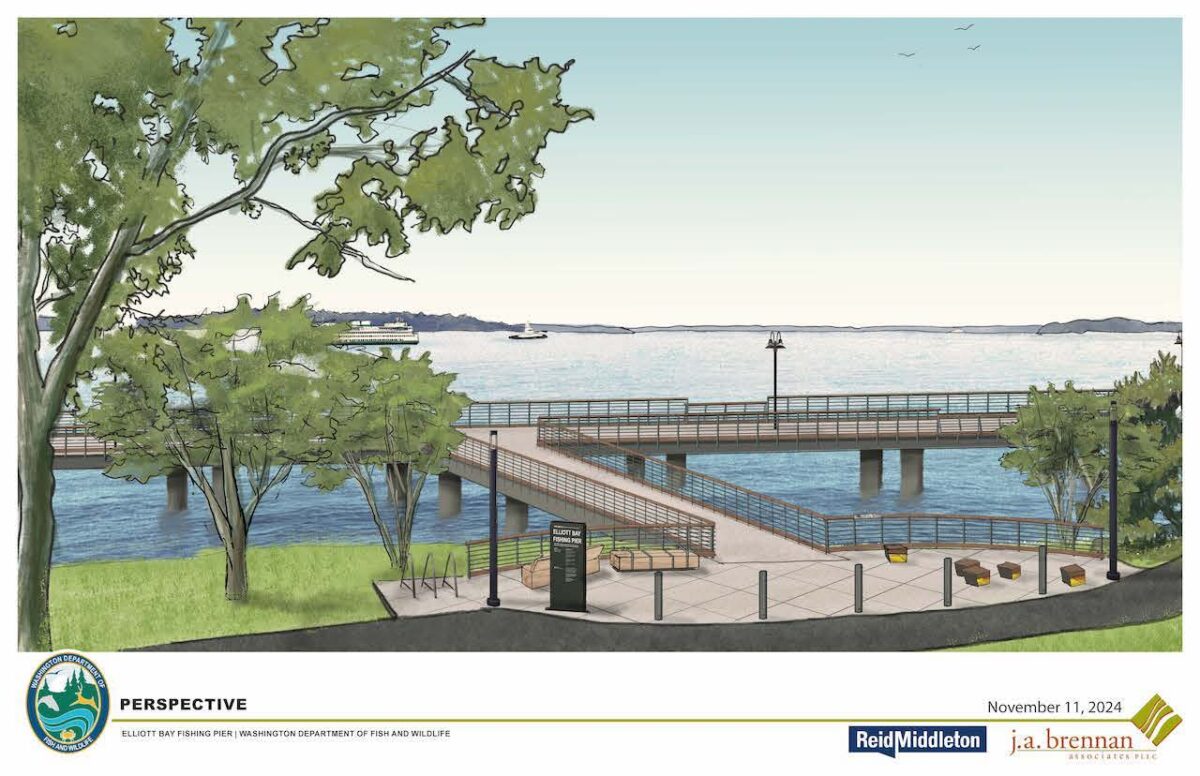
A Look At WDFW’s 2025-27 Budget As Approved By Washington’s Legislature
There’s still the matter of the governor’s signature – or veto – but WDFW is taking stock of the Operating and Capital Budgets that Washington’s legislature just passed in Olympia.
Per an all-staff memo, the conference budgets agreed to by senators and representatives on Sunday present “a difficult set of cuts for the agency,” including reductions amounting to tens of millions of dollars and “dozens” of full-time equivalents.

That’s despite state lawmakers voting to increase fishing and hunting license fees by 38 percent, resurrecting the $8.75 (out-the-door cost) Columbia River endorsement, and hiking the cost of the Discover Pass and personalized license plates by 50 percent and $10, respectively, all money that funnels entirely or in part back to WDFW but in this case doesn’t increase its budget for the 2025-27 biennium.
“Unfortunately, none of the bills will provide additional capacity for the Department but instead mitigate against further reductions,” stated Morgan Stinson, WDFW chief financial officer, in that memo.
Money from the license fee hike will mostly “cover increased costs due to compensation while the remainder of the revenue is used to offset State General Fund reductions as a fund swap,” while the endorsement and parking pass offset other cuts, and license plate dollars, which go to nongame species, fix a “structural deficit where costs exceeded revenue,” Stinson wrote.
WDFW and other natural resource agencies are a minuscule part of the state budget, but with expenditures ballooning in recent years and a multibillion-dollar shortfall suddenly projected just before the start of the recently concluded session, lawmakers looked to balance the budget in part by clawing back some of WDFW’s General Fund disbursements as they also passed various taxes.
“This was a tough session,” summarized spokeswoman Sam Montgomery on Wednesday morning. “We ended up with legislatively proposed increases in fees, and instead of a chance to do new work with that revenue, we received further cuts. Without the work of our stakeholders and tribal co-managers speaking to the legislature and reinforcing the importance of these resources, we could have seen even more significant impacts.”
It remains to be seen how or if Governor Bob Ferguson exercises his veto authority in regards to WDFW’s budget, but in the meanwhile, there is new money for the agency’s safety and training programs as well as “a few wins” for hatchery construction projects. However, in terms of individual line items, the legislature also cut $4.4 million out of an ongoing hatchery production evaluation that was approved in 2022’s supplemental budget.
“This work provided the data needed to assess and improve the survival of hatchery fish and adaptively manage hatchery programs under changing environmental conditions. This impacts management goals and the ability of natural populations to rebuild,” Stinson wrote to staff.
There’s also a $2.1 million reduction in administrative costs, $2 million cut to biodiversity work, and a total gutting of the Aquatic Lands Enhancement Account Volunteer Cooperative Grant Program benefitting fish and wildlife.
The Western Washington Pheasant Program also saw a reduction of $320,000, but Stinson states that that won’t take effect until the 2027 fiscal year begins, meaning July 1 of that year.

WDFW also saw lawmakers decline to fund a number of “one-time items” – meaning, they were previously funded on a year-to-year basis rather than as ongoing line items – that the agency had requested continued dollars for.
That list includes $1.6 million for salmon and steelhead monitoring, which – if concerns back in March are still valid – may impact the ability to hold catch-and-release fisheries for wild winter-runs on the Skagit and Sauk in coming seasons.
“We’re currently exploring what this line item means for us in terms of impacts. We should have a better understanding in the coming weeks,” stated WDFW spokeswoman Eryn Couch Tuesday afternoon.
Other one-time items that went unfunded include:
• $4.4 million to reduce forest fuels on WDFW wildlife areas;
• $2 million for a riparian systems assessment;
• $1.4 million to hire staff to complete required paperwork for Columbia River fisheries held over ESA-listed stocks;
• and another $1.4 million for Lake Washington predator suppression to help more salmonid smolts successfully outmigrate.
That last one was a bitter pill for metro lake sockeye advocate Frank Urabeck.
“Very disappointing, as we are so close to knowing how to restore sockeye fishing in Lake Washington again and have fisheries as good or better than now occurring at Baker Lake. Without the means to continue reducing the juvenile sockeye predator population, this great opportunity likely will be lost,” said Urabeck, who recalled the last tribal and sport fishery on the lake back in 2006 as “fantastic” and has been fighting an uphill battle to get back to those halcyon days ever since.

Lawmakers in the Senate and House had differing ideas on some of WDFW’s budget requests, but at least provided some money for them, including $750,000 to operate the Toutle and Skamania Hatcheries. WDFW had asked for $1.9 million; the upper chamber would have provided $1.5 million, the lower chamber zilch. While three-quarters of million dollars will still be useful, the two Southwest Washington facilities are “missing half the funding needed for their operations,” according to Stinson, who in March stated that production of 1.5 million salmon and steelhead was at risk if the hatcheries weren’t fully funded.
WDFW had also requested $3.1 million for sea lion and harbor seal work both on the Columbia and Puget Sound, but the Senate only offered $1.6 million, the House $1.1 million. In the end the agency will receive $1.1 million, but that money was limited to being used on the Columbia, where Washington, Oregon and various tribes have a five-year federal permit good through this August to lethally remove California and Steller sea lions at Bonneville Dam and the authority – but not necessarily the equipment – to do elsewhere that ESA-listed salmon and steelhead run.
(Sea lion numbers during the ongoing spring Chinook run and that soon-to-expire permit are a big story on Portland TV this week.)

And while lawmakers provided just under $1.4 million for responding to wildlife diseases, all of that money is “specifically for chronic wasting diseases, leaving no additional funding for other wildlife diseases, such as avian influenza,” according to Stinson.
It wasn’t all cuts or partially funded requests for WDFW. There’s $7.2 million in one-time funding to bolster ongoing work to prevent quagga and zebra mussels from getting into Washington waters, as well as – get ready for the annual howls of protest – over $1 million for recovering wolves and moderating the Wolf Advisory Group.
Also on the wolf front, WDFW and Department of Agriculture are tasked with exploring “Pay for Presence,” a concept to “defray some of the costs incurred by livestock producers who ranch in the presence of wolves,” and write a report due to the legislature by this December, per Stinson.
And there’s $3.57 million in new money for WDFW’s safety and training program. Following the deaths of two staffers on the water, WDFW identified that program as one of its “budget items of greatest agency need.”
Another one is biodiversity work, and while lawmakers didn’t buy into WDFW’s proposed ramping up to $24 million a year, they still provided $14 million in both the 2026 and 2027 fiscal years, a cumulative $2 million less than was funded in 2025.
Meanwhile, lawmakers’ conference Capital Budget features “a few wins and a few compromises,” states Stinson.
“Overall, the agency’s priorities were funded, and total funding levels are consistent with last biennium. The wins included funding for some large construction projects that are in progress. The compromise was that our minor works budget (projects under $1.5 million) is roughly half of what it was last biennium,” he reports.
The Capital Budget includes just under $13 million for Spokane Hatchery renovations (WDFW had requested $18.1 million), $11.3 million for modifications at Sol Duc Hatchery to support southern resident killer whale forage production, $9.3 million, $7.7 million and $7.0 million for renovations at Naselle, Soos Creek and Beaver Creek (Elochoman) Hatcheries, respectively, $6.5 million to upgrade a fish collection facility on the Toutle River, and $4.5 million for intakes and ponds at Wallace Salmon Hatchery, among other items.
It also has $2 million for what’s known as the Yakima River Camp Access Project 3 miles of east of Cle Elum, which includes an 87-acre purchase for water access and more.

On the unfunded side, WDFW had asked lawmakers for $15 million to build a new Elliott Bay Fishing Pier. Still, spokesman Chase Gunnell said on Tuesday that the agency is “proceeding with the design for the new fishing pier using existing funding,” and expects to put out a final draft plan soon for reviews and consultations.
“Working in coordination with our partners at the Port of Seattle, our hope is to finalize design and construction plans for the new Elliott Bay Fishing Pier by the end of this year while exploring future opportunities for construction funding,” Gunnell said.
Passage of WDFW’s Operating and Capital Budgets mark the culmination of a process that for WDFW began early last year when staffers drummed up a set of funding requests and then the Fish and Wildlife Commission signed off on sending those to Governor Inslee, who made his proposal before stepping out of office. Budget writers in the Senate and House mulled it all and directives from new Governor Bob Ferguson and came up with their own proposals, which were then passed out of each chamber and, ultimately, melded with one another via the conference process.
Of note, WDFW’s two-year Operating Budget doesn’t appear to hold any surprises like 2023-25’s Ruckleshaus Center proviso, which didn’t quite work out like how Washington Wildlife First had hoped it would.
But there are some interesting provisos including $6 million to boost capacity to study “salmon contaminants of emerging concern” such as 6PPD-quinone and PFAS, known as forever chemicals; a total of $2.35 million for shrub-steppe restoration, which benefits not only rare prairie grouse but game species and more; and $8.7 million for addressing maintenance backlogs on WDFW lands.
And that, with a bunch of layouts for our other mags hanging over my head today, is going to have to be all the damn time I have for this fine kettle of fish and game.
